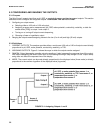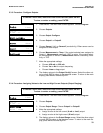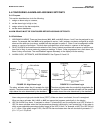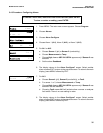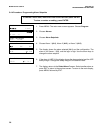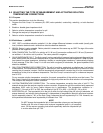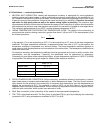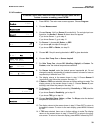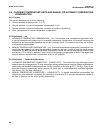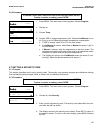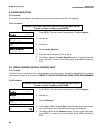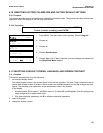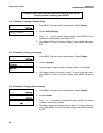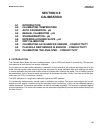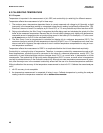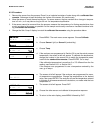
40
MODEL SOLU COMP II SECTION 5.0
PROGRAMMING THE ANALYZER
5.6 CHOOSING TEMPERATURE UNITS AND MANUAL OR AUTOMATIC TEMPERATURE
COMPENSATION
5.6.1 Purpose
This section describes how to do the following:
1. Choose temperature display units (°C or °F).
2. Choose automatic or manual temperature compensation for pH.
3. Choose automatic or manual temperature correction for conductivity/resistivity.
4. Enter a temperature for manual temperature compensation.
5.6.2 Definitions — pH
1. AUTOMATIC TEMPERATURE COMPENSATION — pH. The analyzer uses a temperature-dependent factor
to convert measured cell voltage to pH. In automatic temperature compensation, the analyzer measures the
temperature and automatically calculates the correct conversion factor. For maximum accuracy, use automat-
ic temperature compensation.
2. MANUAL TEMPERATURE COMPENSATION — pH. In manual temperature compensation, the analyzer con-
verts measured voltage to pH using the temperature entered by the user. It does not use the actual process
temperature. Do NOT use manual temperature compensation unless the process temperature varies no more
than about ±2°C or the pH is between 6 and 8. Manual temperature compensation is useful if the sensor tem-
perature element has failed and a replacement sensor is not available.
5.6.3 Definitions — Conductivity/Resistivity
1. AUTOMATIC TEMPERATURE CORRECTION — CONDUCTIVITY. The conductivity of an electrolyte solution
depends strongly on temperature. To allow comparison among measurements made at different temperatures,
conductivity and resistivity measurements are usually converted to the value at 25°C. The Solu Comp II per-
forms the correction automatically using a neutral salt, dilute acid, or linear temperature coefficient algorithm.
See Section 5.5.3 for more information.
2. MANUAL TEMPERATURE CORRECTION — CONDUCTIVITY. In manual temperature compensation, the
analyzer converts measured conductivity (or resistivity) to the value at 25°C using the temperature entered by
the user. It does not use the actual process temperature.



